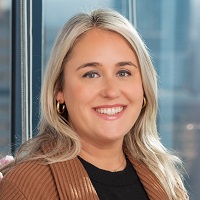Which of the 3 Financial Phases Are You In?
Knowing which of the financial phases of life you are in can help you better plan to build, protect and enjoy your assets, no matter what your age.


Every year we see the same months, holidays and seasons – it’s all pretty predictable. While you may not know when a winter storm will hit, you can usually count on chillier weather come winter. The same can be said for financial phases. While not always easy to predict, you can find patterns if you look for them.
But how does knowing a financial phase pattern help? When it comes to financial planning, the answer is a lot.
What are financial phases?
There is a natural ebb and flow to money habits throughout the year. For example, most of us tend to spend more around the holidays because of gifts and parties. When January hits, people take a look at their budget, set goals for the year and attempt a financial diet. The same can happen in the summer as people splash out on vacations or enjoy a plethora of activities with their families.

Sign up for Kiplinger’s Free E-Newsletters
Profit and prosper with the best of expert advice on investing, taxes, retirement, personal finance and more - straight to your e-mail.
Profit and prosper with the best of expert advice - straight to your e-mail.
Patterns can also occur throughout, showing up in spending and savings habits. Recent college grads probably live on a tight budget with less savings, whereas an established professional might be more focused on long-term goals, such as buying a home or saving for retirement.
Is it the same for everyone?
While the year can offer similar periods of spending and saving, each individual has their own plans, priorities and habits that make them unique. If you enjoy saving, maybe you take vacations during shoulder seasons to take advantage of lower hotel and airfare prices or you sign up for a credit card (of course, paying it off every month) that supports your travel habit – think free rooms, reduced flights, etc. Or if you always go big on your birthday each year, you create a plan to automatically save money every month into a “birthday fund” so when the time comes each year you’re ready.
The same is true when looking at life patterns or saving and investing. If you land a well-paid job out of college, perhaps you spend more lavishly than the average early 20-something would. Or someone who joined the FIRE movement would contribute to their retirement and save differently since they have a different goal. It’s important to understand that each person has their own goals and priorities, and sometimes life gets in the way with unexpected obstacles.
How does knowing this help?
Knowing the patterns can help you plan for the future. If flying home for the holidays with a Santa sack of gifts is your pride and joy, you can plan ahead by only eating in or cutting back on entertainment a few months in advance. When you know something happens annually that you want to enjoy to the fullest and not worry about your cash flow, you can budget it in fun ways beforehand.
For example, if you love having happy hour with friends every week, maybe offer to host it at your house for one month. Rotate who brings the drinks and apps each week, and what you spend in one month can easily be equal to what you spend in one week out on the town.
Taking the time to write down important things to you, both annually and in the bigger picture, is a great starting point. If some of these items have regularly occurring dates, like holidays or birthdays, you can build specific timelines around when you need to focus on saving.
Sometimes there are unplanned events, like weddings or concerts, but you can find ways to save all year round so you have a sturdy fun fund waiting for you when you need it. (Of course, you should only build a fun fund after you have a solid emergency savings fund.)
What phase am I in?
The economic life phase you’re in isn’t necessarily tied to your age, as many people assume. We’ve uncovered that the phases actually better reflect where you are in your life, which is split into three different phases: (1) build and grow, (2) transition (3) and finally, distribute and deploy. For example, a 35-year-old in the FIRE movement and a 68-year-old late saver for retirement can both be focused on their transition into retirement.
Assessing your stage and adjusting your plan should be an ongoing process, but you can only know the phase you are in after you articulate your goals.
Financial phase No. 1: Build and grow
During this phase, decide on your long-term goals and plan for them. Is saving for retirement a top priority? Work toward maximizing your contributions to your 401(k) plan. (A tip I learned early on: When you receive raises, save more and live off of the amount you were already comfortable with.) Or, is buying a home a priority? Then figure out a savings plan for a deposit, mortgage and other expenses that is realistic and build on it.
The build and grow phase is also about protecting your future earnings. This is a good time to look at life insurance and create an estate plan for you and your family. I’m currently in this phase and wanted to ensure that (as scary as it is to think about!) my husband and boys would be OK if something were to happen to me. We bought term life insurance for each of us and created an estate plan to dictate what would happen if something were to happen to me or my husband. This gave us both peace of mind.
Financial phase No. 2: Transition
During this phase, it’s important to understand what you’ve built during your years of saving. It’s also the time to figure out how you want to live once you decide to leave full-time employment. Working with a financial adviser to do a financial goal assessment is important to project how well you’ve saved.
If you haven’t done a budget yet, it’s critical to understand your spending so you know what you will need to live off of.
During this phase, it’s important to factor in possible moves – do you want to stay in your home, downsize or even upgrade? Are there any plans to buy a second home to travel to since you’ll have more time? These are factors to take into account.
It’s also critical to assess how much risk you’re taking in your portfolio – this is the time to really have a good plan for protecting your assets. If something big happens in the market, it would be terrible to lose a large amount of money and delay your plans to make this transition.
Financial phase No. 3: Distribute and deploy
In this phase, understanding where and how you are going to pull from your assets is crucial. There are important strategies to think about and tax consequences to consider.
If you are well-funded and have excess assets, thinking about how you are going to leave your legacy is also important. There are many ways to give, including charities, foundations and personal gifts, and these can be structured to be given while you are alive or after you pass. The beauty of it is, it’s all your choice as long as you have a good plan.
No matter what financial phase you are in, planning and preparing for the next step will always yield positive results. The better you articulate your goals, for both the short and long term, the more likely it becomes you can achieve them.
Get Kiplinger Today newsletter — free
Profit and prosper with the best of Kiplinger's advice on investing, taxes, retirement, personal finance and much more. Delivered daily. Enter your email in the box and click Sign Me Up.

Kelli Kiemle holds multiple roles with Halbert Hargrove. As Managing Director of Growth and Client Experience, she sets the tone for the quality and character of Halbert Hargrove's client service relationships. She also manages the associate wealth advisers and client service managers. Kelli is also responsible for overseeing the firm's wide-ranging marketing and communications initiatives, including their mentor program.
-
 Trump's Sweeping New Tariffs Rattle Wall Street, Main Street
Trump's Sweeping New Tariffs Rattle Wall Street, Main StreetThe Kiplinger Letter Trump is promising that the short-term pain of steep new tariffs on imports will spark a manufacturing renaissance. But they pose major risks in the near term.
By Jim Patterson Published
-
 Why Does the Fed Prefer PCE Over CPI?
Why Does the Fed Prefer PCE Over CPI?Inflation has been top of mind for lots of folks in recent years. Most of Wall Street follows the CPI but the Fed favors the PCE. Here's why.
By Charles Lewis Sizemore, CFA Published
-
 How to Age-Proof Your Retirement Plan
How to Age-Proof Your Retirement PlanLongevity risk is a big threat to your retirement, but there are several strategies to protect yourself from running out of money, no matter how long you live.
By Nico Pesci Published
-
 Retirement Planning for Couples With a Generation Gap
Retirement Planning for Couples With a Generation GapDo you and your partner have different retirement timelines and attitudes to saving? It is possible to make plans together. This is how one couple did it.
By Phil Wright, Certified Fund Specialist Published
-
 Q1 Post-Mortem: The Market Shifts You Don't Want to Ignore
Q1 Post-Mortem: The Market Shifts You Don't Want to IgnoreAs the second quarter gets underway, here are some takeaways from the market's first-quarter performance to consider as you make your investment decisions.
By Prem Patel, MBA, IAR Published
-
 How to Replace a Corporate Trustee (and Make Other Trust Changes)
How to Replace a Corporate Trustee (and Make Other Trust Changes)The right choice of trustee today may not be the right choice for trust beneficiaries in the future. Here's what you should know.
By Christopher F. Tate, J.D. Published
-
 How to Balance Your Insurance Expectations vs the Reality
How to Balance Your Insurance Expectations vs the RealityJust because you have an insurance policy doesn't mean that you're totally covered in the event something bad happens.
By Karl Susman, CPCU, LUTCF, CIC, CSFP, CFS, CPIA, AAI-M, PLCS Published
-
 How Building Liquidity Into Your Retirement Plan Can Pay Off
How Building Liquidity Into Your Retirement Plan Can Pay OffTo succeed in investing for retirement, you need time and discipline — liquidity can give you both.
By Samantha Compton, IAR Published
-
 Striking Oil in Opportunity Zones: Now Might Be the Best Time to Invest
Striking Oil in Opportunity Zones: Now Might Be the Best Time to InvestYou could unlock hidden wealth in QOZs with strategic oil and gas investments, potentially combining tax advantages with long-term growth in an essential industry.
By Daniel Goodwin Published
-
 What You Don't Know About Annuities Can Hurt You
What You Don't Know About Annuities Can Hurt YouLack of awareness leads many to overlook these potent financial tools, and with the possibility of running out of money in retirement, that could really hurt.
By Ken Nuss Published